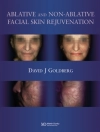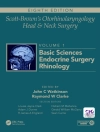Critical care medicine is a dynamic and exciting arena where complex pathophysiologic states require extensive knowledge and up-to-date clinical information. An extensive kno- edge of basic pathophysiology, as well as awareness of the appropriate diagnostic tests and treatments that are used to optimize care in the critically ill is essential. Since our frst edition 7 years ago, new information crucial to the care and understanding of the critically ill patient has rapidly accumulated. Because this knowledge base crosses many different disciplines, a comprehensive multidisciplinary approach presenting the information is essential, similar to the multidisciplinary approach that is used to care for the critically ill patient. We have strived to provide this content in an easily digestible format that uses a variety of teaching tools to facilitate understanding of the presented concepts and to enhance information retention. To meet the demand to provide comprehensive and diverse educationin order to und- stand the pathogenesis and optimum care of a variety of critical illnesses, we have subst- tially revised the prior topics in the frst edition with updated information. We have also markedly expanded the number of topics covered to include acute lung injury and the acute respiratory distress syndrome, an expanded discussion of the physiology and operation of mechanical ventilation, obstetrical care in the ICU, neurosurgical emergencies, acute co- nary syndromes, cardiac arrhythmias, role of whole body rehabilitation in the ICU, ethical conduct of human research in the ICU, and nursing care of the ICU patient.
İçerik tablosu
Critical Care Procedures Diagnostic Testing and ICU Policies.- Airway Management.- Oxygenation Without Intubation.- Blood Gas Sampling.- Hemodynamic Monitoring.- Drainage Tube Management.- Cardiac Pacing and Defibrillation.- Enteral Feeding Tubes.- Common Procedures in the Intensive Care Unit: Thoracentesis, Lumbar Puncture, Paracentesis, and Pericardiocentesis.- Noninvasive Monitoring in the Intensive Care Unit.- Endoscopy in the Intensive Care Unit.- Radiologic Imaging in the Critically Ill Patient.- Critical Care Research and Regulatory Compliance.- Nursing Care in the Intensive Care Unit Setting: The Role of the Nurse in the ICU.- Transport of Critically Ill Patients.- Pathophysiologic Disease States Encountered in the Critically Ill Patient.- Respiratory Failure.- Acute Lung Injury (ALI) and Acute Respiratory Distress Syndrome (ARDS).- Management of Massive Pulmonary Embolism.- Heart Failure.- Cardiac Arrhythmias.- Gastrointestinal Hemorrhage.- Acute Liver Failure.- Acute Renal Injury.- Sepsis Syndromes.- Bleeding Diathesis.- Nutrition Assessment and Nutrition Therapy in Intensive Care Unit Patients.- Oxygen Content, Delivery, and Uptake.- Circulatory Shock.- Critical Care Neurology.- Neuromyopathies in the Critically Ill.- Neurosurgical Emergencies.- Disorders of Thermoregulation.- Infections in the Intensive Care Unit.- Critical Care Endocrinology.- Evaluation and Management of Toxicological Emergencies.- Metabolic Disturbances of Acid–Base and Electrolytes.- Special Problems in the Critically Ill Trauma Patient.- Ethics in Critical Care.- Psychological Dysfunction in the Intensive Care Unit Patient.- Host Defenses.- Burn Critical Care.- ICU Care of the Solid Organ Transplant Recipient.- Postoperative Care of the Cardiac Surgery Patient.- Obstetrical Care in the ICU Patient.- Specific Treatments in the Critically Ill Patient.- Modes of Mechanical Ventilation: Part 1.- Mechanical Ventilation – Part II: Monitoring of Respiratory Mechanics During Mechanical Ventilation and Ventilator Strategies.- Noninvasive Ventilation.- Weaning from Mechanical Ventilation.- Mechanical Hemodynamic Support.- Pharmacologic Hemodynamic Therapy of Shock.- Advanced Cardiopulmonary Resuscitation.- Antiarrhythmic Drug Management.- Acute Coronary Syndromes.- Hypertensive Crisis.- Dialysis.- Use of Blood Components.- Antimicrobials.- Use of Analgesics and Sedatives in Critical Care.- Use of Neuromuscular Blocking Agents in the Intensive Care Unit.- Prophylactic Regimens in the Intensive Care Unit.- Rehabilitation in the Intensive Care Unit.












